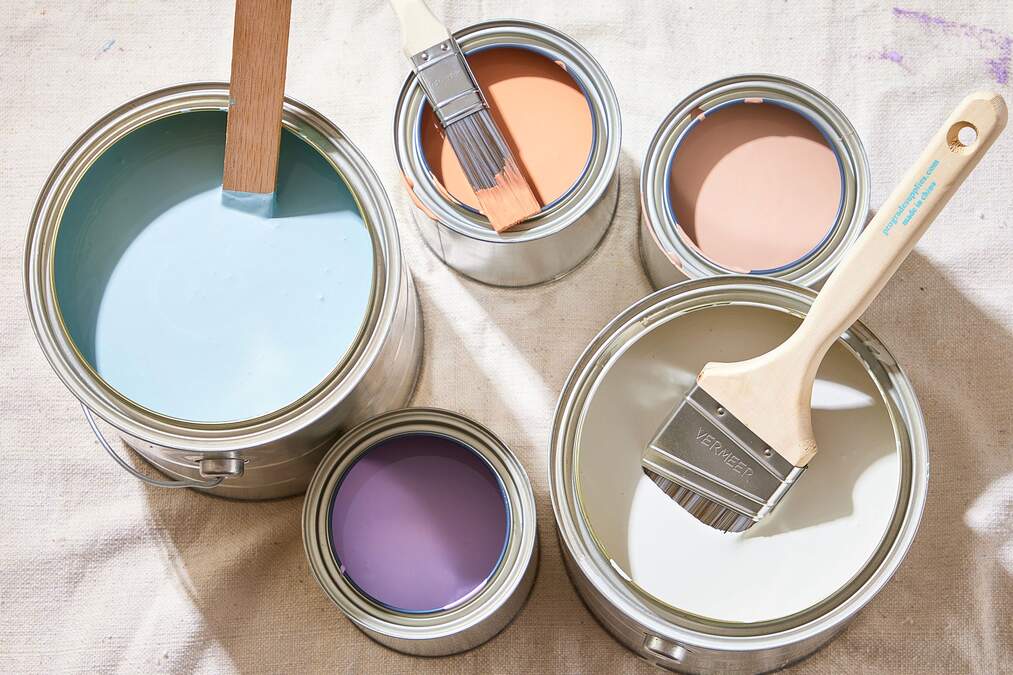
Common House Painting Mistakes and How to Avoid Them
A Fresh Coat Can Go Wrong Fast
Painting your home—whether it’s the kitchen cabinets or your exterior trim—should feel like a satisfying upgrade. But for many homeowners, what starts as a weekend project ends up turning into a costly do-over. From poor prep to wrong product choices, there are a handful of common house painting mistakes homeowners make that can completely derail the final result.
The truth is, painting isn’t just about slapping color on a wall. It’s a process that requires the right prep, materials, tools, and technique. Missing just one of those steps can lead to bubbling, streaking, peeling, or uneven color that doesn’t hold up.
In this post, we’ll break down some of the most frequent mistakes homeowners make—and how to avoid them so your next project turns out smooth, durable, and professionally polished.
Skipping Surface Prep or Rushing It
Ask any professional painter, and they’ll tell you: the prep is where the magic happens. Yet this is the step most often skipped—or rushed—by homeowners trying to speed through a project.
Here’s why it’s a critical mistake:
- Paint won’t adhere properly to dirty or glossy surfaces. Dust, grease, and residue prevent paint from bonding, leading to chipping and peeling within months.
- Sanding matters more than you think. A quick once-over with a sanding block isn’t enough. Glossy surfaces need to be scuffed thoroughly to create grip, and damaged areas must be smoothed out to avoid visible imperfections.
- Flaking or peeling old paint must be fully removed. Painting over compromised areas just traps the problem underneath and causes failure faster.
Proper prep often includes:
- Washing walls or siding to remove dirt and oils
- Scraping loose paint
- Patching dents, holes, or cracks
- Sanding for adhesion
- Applying caulk around trim or seams where needed
It’s time-consuming, but without it, even the best paint can’t do its job.
Using the Wrong Type of Paint or Finish
Another mistake that homeowners frequently make? Choosing the wrong paint for the space or surface they’re working on. Not all paints are created equal—and using the wrong type can lead to poor coverage, premature wear, or even damage.
Here are some common paint mismatches:
- Using interior paint outside – Interior paints aren’t formulated to withstand moisture, UV exposure, or temperature shifts. Using them on exterior surfaces will almost always result in peeling or fading.
- Applying flat paint in high-traffic areas – Flat finishes show scuffs and stains easily. They’re great for ceilings or low-traffic rooms, but not ideal for hallways, kitchens, or bathrooms.
- Using glossy paint on textured surfaces – Glossy finishes highlight imperfections. On uneven walls or wood grain, they can actually make flaws more noticeable.
- Skipping specialty paints in wet areas – Bathrooms, laundry rooms, and kitchens benefit from moisture-resistant formulas that fight mildew and stand up to humidity.
A professional painter knows exactly which products and sheen work best for each environment. If you’re unsure, always ask or consult with a pro before purchasing gallons of the wrong product.
Skipping Primer or Choosing the Wrong One
Primer is often misunderstood—and frequently skipped by DIYers who assume a good paint will cover everything. But primer plays a very specific and important role, and leaving it out is one of the most common painting mistakes homeowners make.
- It improves paint adhesion – Especially on raw wood, previously unpainted drywall, or glossy surfaces. Without primer, paint may not stick or may peel prematurely.
- It blocks stains and tannins – Water marks, grease spots, or wood tannins (especially from pine or cedar) can bleed through paint unless properly sealed with a stain-blocking primer.
- It evens out the color and sheen. Painting over dark or inconsistent surfaces without priming can lead to uneven coverage or patches that require extra coats.
Another issue: using an “all-in-one paint and primer” when a dedicated primer is really needed. While these hybrid products have their place, they’re not suitable for every surface, particularly when dealing with bare wood, heavy stains, or major color changes.
Professional painters know when to use bonding primers, stain-blockers, or moisture-resistant primers—and they never skip this step.
Poor Technique and Tools
Even with the right prep and product, a great paint job can fall apart if it’s applied with the wrong tools or technique. This is where many homeowners get tripped up, especially when relying on old brushes, bargain rollers, or poor-quality painter’s tape.
Here are the most common technique-related mistakes:
- Using cheap or worn-out brushes – Frayed bristles leave streaks and shed hairs into the paint. A quality brush holds paint better and delivers cleaner lines.
- Overloading the roller – Applying too much paint at once causes drips, splatter, and uneven texture. Rolling in an “M” or “W” pattern helps distribute paint more evenly.
- Skipping tape or using the wrong kind – Masking tape often leaves residue or allows bleeding. Professional-grade painter’s tape creates crisp lines and peels away cleanly.
- Failing to “cut in” properly – Rushing through corners and edges without precision results in uneven borders and missed spots.
Professionals take time to ensure sharp edges, consistent texture, and even coverage across all surfaces. They also know when to use sprayers, back-rollers, or specialty brushes for different surfaces—from smooth interior walls to textured exterior siding.
Cut Corners Now, Repaint Sooner
Painting your home is an investment of time and money, and like any investment, the return depends on how well it’s done. Most of the painting problems homeowners encounter aren’t caused by bad luck or “old paint”—they’re the direct result of avoidable mistakes.
Let’s recap the biggest missteps:
- Rushing or skipping surface prep
- Choosing the wrong type of paint or finish
- Ignoring the need for primer
- Using cheap tools or poor technique
Each of these mistakes chips away at the life of your paint job. What should last 7–10 years might start peeling or fading in 2 or 3 years. And the cost of repainting sooner—not to mention the time and disruption—adds up quickly.
If you’re taking on a small touch-up, attention to detail is everything. For larger projects, or when you’re after a flawless, long-lasting result, partnering with a professional painter can save you from all the stress (and mess) that comes with trial and error.
Ready to avoid these common pitfalls? Get in touch with Prep Smart Painting for expert service that gets it right the first time.






